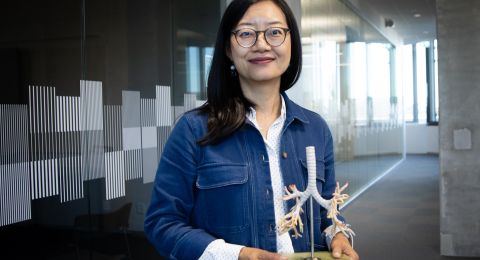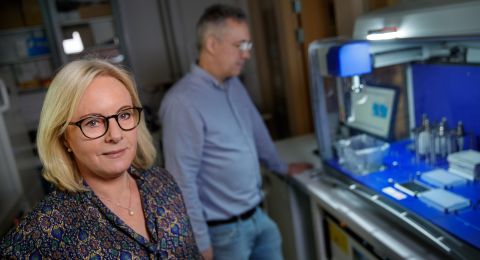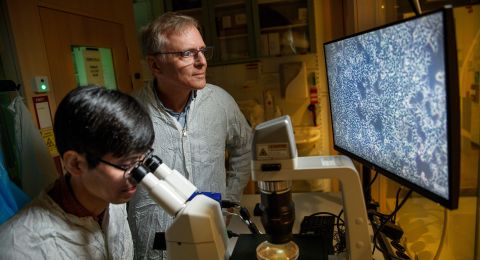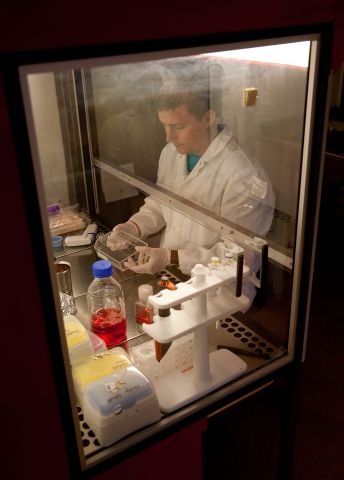
Project Grant 2013
Virus host cell interactions and development of attachment inhibitors
Principal investigator:
Professor Niklas Arnberg
Co-investigator:
Mikael Elofsson
Institution:
Umeå University
Grant in SEK:
SEK 23.8 million over five years
“You feel poorly and go to the medical center. There they take a quick CRP that shows a virus rather than bacteria is probably the culprit. In these cases it is often a common virus such as adenovirus or picornavirus,” Niklas explains. He is Professor of Clinical Microbiology at Umeå University.
“There are over 50 types of adenoviruses and more than 100 varieties of picornaviruses,” he adds. “You don’t die of these viruses, but they cause a lot of suffering. There are currently no medicines that provide a cure.”
Niklas’ research team is trying to identify and understand the mechanisms involved when these viruses attach themselves to the cells in the infected eye. They have also begun to study adenoviruses that infect the stomach and intestines, as well as norovirus, which causes winter vomiting disease.
One of our aims is to develop an antiviral drug to cure an eye infection caused by a group of adenoviruses, and we are well on the way.
Curing eye infections
The specific adenoviruses that Niklas is referring to cause epidemic keratoconjunctivitis, EKC, a serious eye infection that affects up to 15 – 20 million people every year. EKC is contagious, and is most common in densely populated areas of Japan and South-East Asia.
Fifteen years ago, when he was a PhD student, Niklas discovered that these viruses bind to a carbohydrate called sialic acid on the outside of infected host cells. He also co-founded a company to develop a new drug, a type of binding inhibitor containing sialic acid, based on his research findings. The drug is now being tested on people in clinical studies at St. Erik Eye Hospital in Stockholm and at seven eye clinics in Germany.
“I really enjoy it, but it has been a long journey. If it works, we hope it will halt the infection, help people to recover more quickly, and reduce the infection rate.”
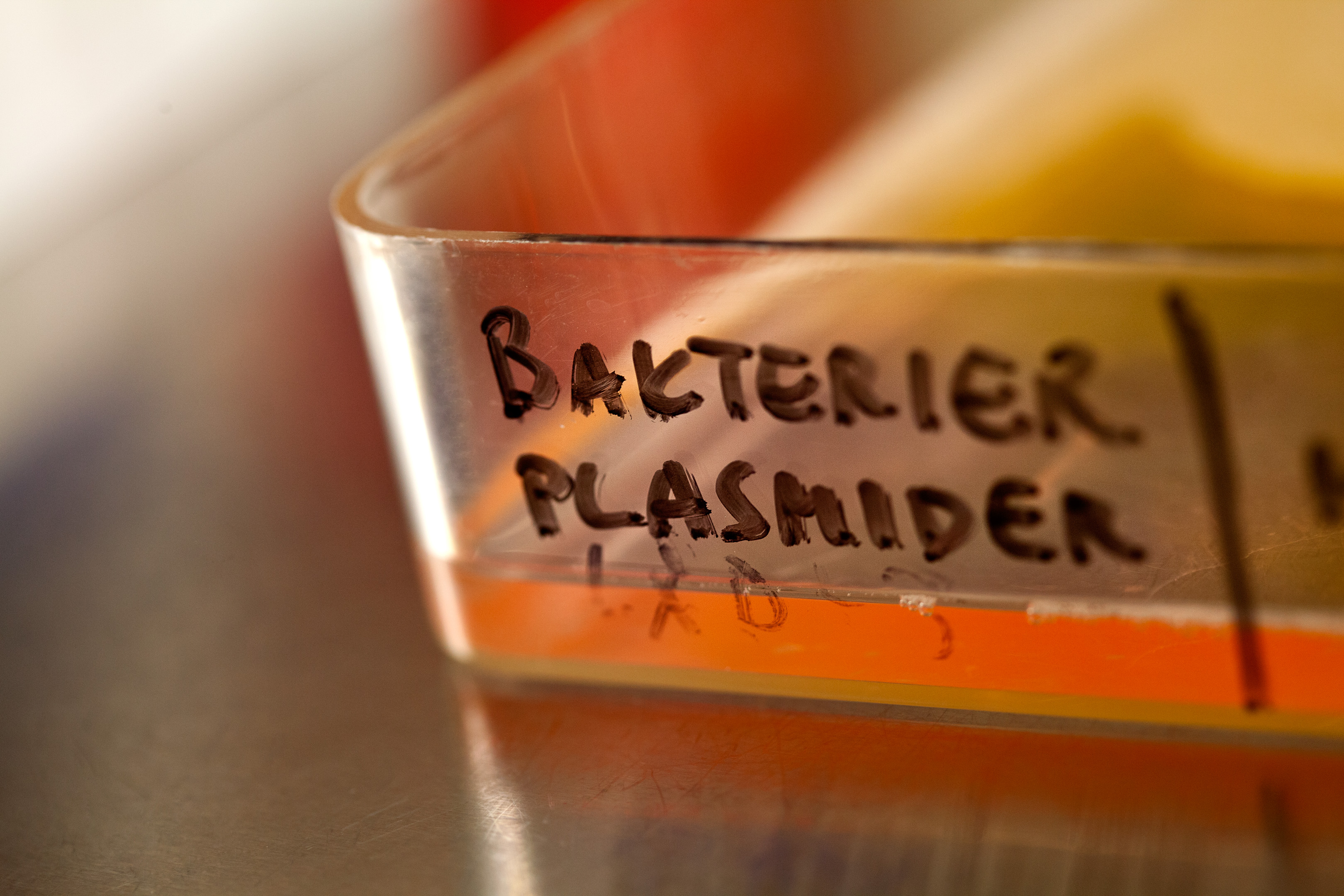
Delving deeper
Niklas points out that virus research is a field offering great development potential. Umeå University has long experience of work on adenoviruses – experience that provides a platform for the current project to build on.
“We are good at research into how viruses bind to cells. The grant from the Knut and Alice Wallenberg Foundation means a great deal in that we can now delve more deeply into different research fields and take more risks than perhaps we might have taken otherwise.”
Thanks to the grant from the Foundation, it has been possible to update an advanced instrument used by the researchers to measure how strongly compounds containing sialic acid bind to the viruses being studied. The technique is called surface plasmon resonance (SPR), and is highly sensitive.
Mikael Elofsson, Professor of Organic Chemistry, is co-investigator in the project. His research team designs the chemical compounds that are evaluated in various binding and infection experiments. He was also involved in developing the compounds now undergoing clinical trials.
One key partner is Professor Thilo Stehle, X-ray crystallographer at The University of Tübingen in Germany. He determines the structure of the virus particles together with sialic acid.
“Using that information we can then design molecules that bind even more effectively to the virus, and prevent viruses from binding to sialic acid found on the outside of eye cells,” Niklas explains.
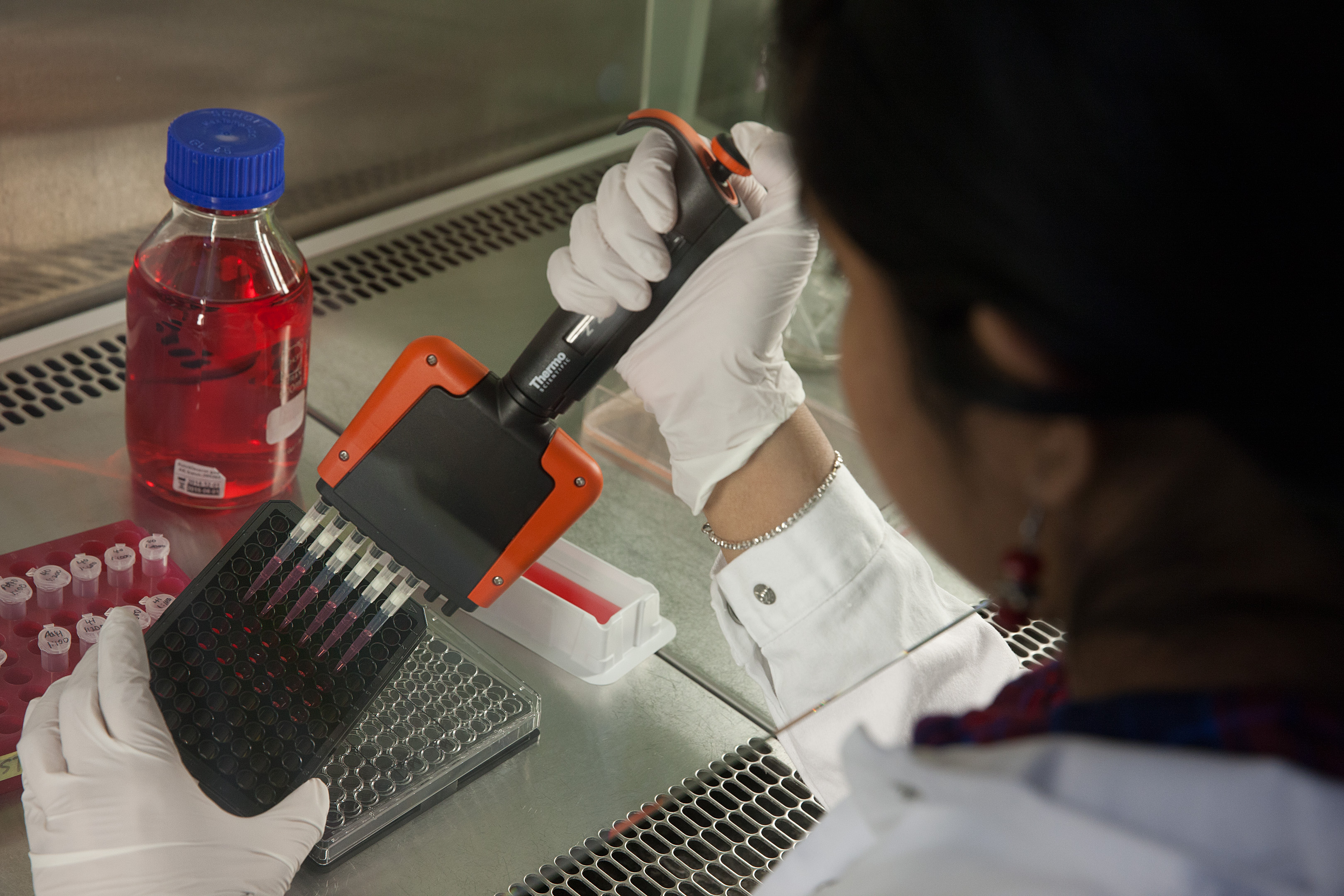
Learning from mucus membranes
The project team is also studying defense mechanisms in the body’s mucus membranes. These membranes contain soluble proteins, called mucins, whose contents include sialic acid. They serve as a barrier preventing viruses from attaching themselves to the cells.
“The adeno- and picornaviruses that infect the eye rarely infect the respiratory tract. One reason for this may be that there are effective barriers containing mucin in the airways that catch viruses, but we do not have any such barrier in tears. This may give us information about how we should design new antiviral drugs.”
Since the adeno- and picornaviruses that infect humans do not infect animals, it is difficult to carry out trials using animals. Whilst giving a guided tour of the lab, Niklas tells how research in this project is confined to cultured human cells, and sometimes also tears collected by the researchers with the help of finely chopped onions.
Antiviral drugs, vaccines and cancer vectors, where viruses are tailored to infect and kill cancer cells alone. There are a number of important areas in which the research findings obtained by Niklas and his colleagues may be of use.
“Essentially, we want to understand why certain viruses infect certain cells or types of tissue. This is a fundamental scientific question. But our work also involves many highly interesting application aspects. It is very inspiring.”
Text Susanne Rosén
Translation Maxwell Arding
Photo Magnus Bergström

